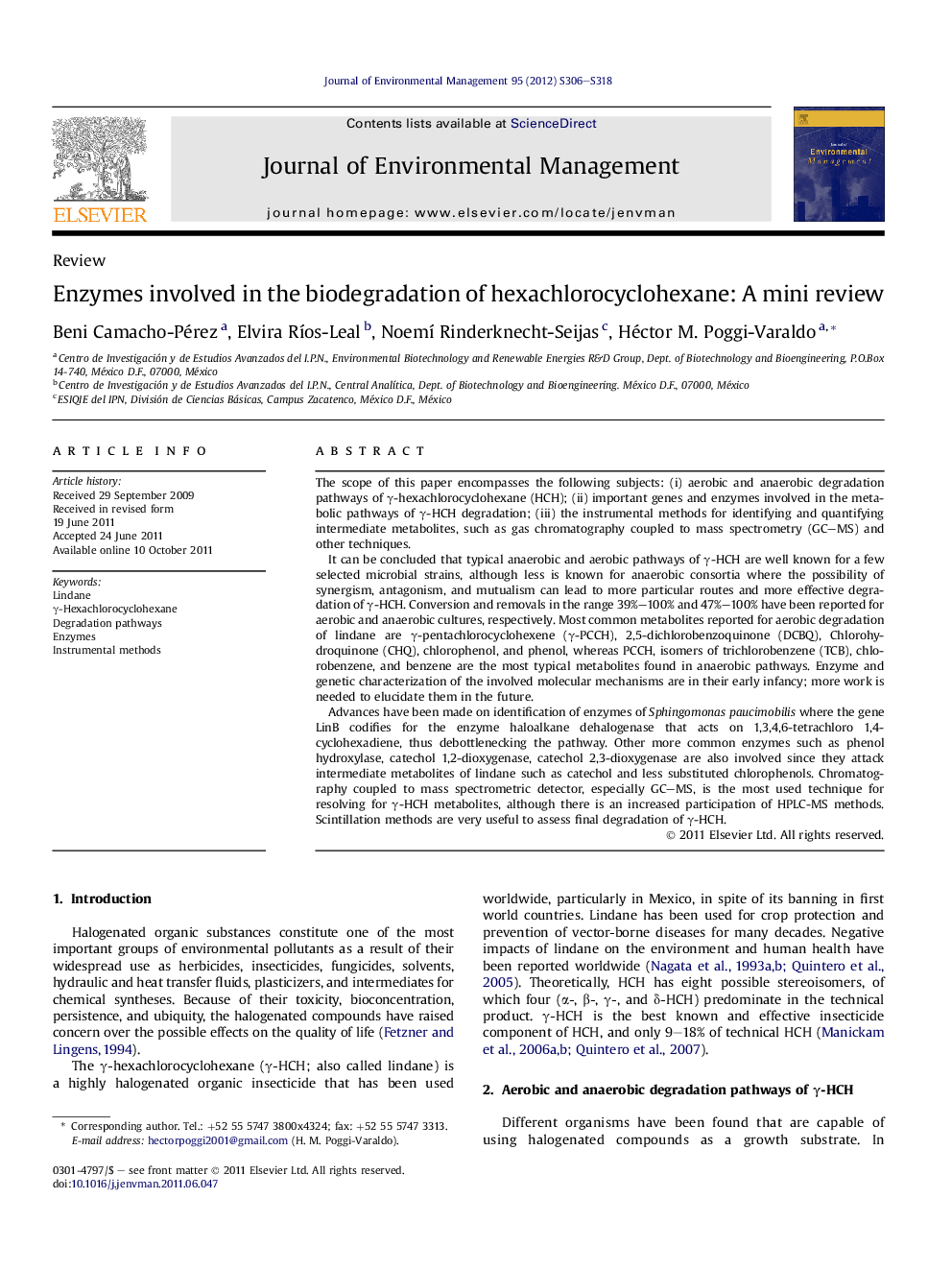| Article ID | Journal | Published Year | Pages | File Type |
|---|---|---|---|---|
| 1057072 | Journal of Environmental Management | 2012 | 13 Pages |
The scope of this paper encompasses the following subjects: (i) aerobic and anaerobic degradation pathways of γ-hexachlorocyclohexane (HCH); (ii) important genes and enzymes involved in the metabolic pathways of γ-HCH degradation; (iii) the instrumental methods for identifying and quantifying intermediate metabolites, such as gas chromatography coupled to mass spectrometry (GC–MS) and other techniques.It can be concluded that typical anaerobic and aerobic pathways of γ-HCH are well known for a few selected microbial strains, although less is known for anaerobic consortia where the possibility of synergism, antagonism, and mutualism can lead to more particular routes and more effective degradation of γ-HCH. Conversion and removals in the range 39%–100% and 47%–100% have been reported for aerobic and anaerobic cultures, respectively. Most common metabolites reported for aerobic degradation of lindane are γ-pentachlorocyclohexene (γ-PCCH), 2,5-dichlorobenzoquinone (DCBQ), Chlorohydroquinone (CHQ), chlorophenol, and phenol, whereas PCCH, isomers of trichlorobenzene (TCB), chlorobenzene, and benzene are the most typical metabolites found in anaerobic pathways. Enzyme and genetic characterization of the involved molecular mechanisms are in their early infancy; more work is needed to elucidate them in the future.Advances have been made on identification of enzymes of Sphingomonas paucimobilis where the gene LinB codifies for the enzyme haloalkane dehalogenase that acts on 1,3,4,6-tetrachloro 1,4-cyclohexadiene, thus debottlenecking the pathway. Other more common enzymes such as phenol hydroxylase, catechol 1,2-dioxygenase, catechol 2,3-dioxygenase are also involved since they attack intermediate metabolites of lindane such as catechol and less substituted chlorophenols. Chromatography coupled to mass spectrometric detector, especially GC–MS, is the most used technique for resolving for γ-HCH metabolites, although there is an increased participation of HPLC-MS methods. Scintillation methods are very useful to assess final degradation of γ-HCH.
► Degradation pathways of lindane (HCH) and involved genes and enzymes reviewed. ► Instrumental methods for determining HCH and metabolites are also examined. ► Advances on identification of enzymes and genes of Sphingomonas paucimobilis. ► Phenol hydroxylase, catechol dioxygenases involved in the attack of intermediate metabolites of HCH. ► Chromatography coupled to mass spectrometry most used technique for resolving for HCH metabolites.
